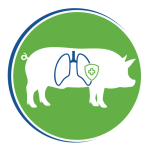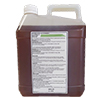
Respiratory Infection
Respiratory diseases of pigs can be classified into two broad categories based on the extent and duration of overt disease: those that affect large numbers of pigs and may be serious but of limited duration, and those that persist in a large number of pigs for indefinite periods. Diseases in the first category can be costly, but the losses are limited rather than ongoing. They include swine influenza, classical swine fever, the pneumonic forms of pseudorabies, porcine circovirus-associated disease, and porcine reproductive and respiratory syndrome. The causal viruses may persist in a herd, but outbreaks of overt disease tend to be self-limiting.
The most important syndromes in the second category are mycoplasmal pneumonia and pleuropneumonia (see below). Atrophic rhinitis, once considered to be a significant cause of respiratory disease in swine, has declined substantially as a result of eradication programs. Salmonellosis and Haemophilus parasuis infections may be significant problems in some herds. Moderate levels of atrophic rhinitis caused by Bordetella bronchiseptica alone may not be too significant but, when coupled with toxigenic strains of Pasteurella, are an important cause of economic loss due to decreased rate of growth and reduced feed conversion in young pigs. Enzootic pneumonia, when caused by mycoplasma alone, is of little consequence; however, when it is combined with secondary infection, eg, Pasteurella multocida, the resulting condition may be severe. Actinobacillus pleuropneumoniae may be associated with considerable losses in some herds. Migrating worm larvae or the infections listed in the first category often lead to severe problems when they occur with the infections in the second category.



